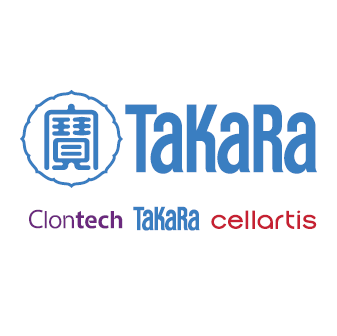Cellartis DEF-CS 500 Culture System
Cellartis DEF-CS 500 Culture System
The Cellartis DEF-CS 500 Culture System is an easy-to-use, complete culture system for defined and feeder-free iPS-cell expansion in a non-colony, 2D-monolayer format.
With this system, cells are maintained in an undifferentiated state with virtually no background differentiation, eliminating the need for cell selection. The highly reproducible nature of the system, coupled with its ability to ensure an efficient and predictable growth rate, makes the DEF-CS culture system ideal for the expansion and scale-up of a homogeneous population of iPS cells. Following reprogramming, successful expansion of your pluripotent stem cells is crucial. The DEF-CS culture system, a research-grade system, provides media, a coating reagent, and growth factors for the easy culture of iPS cells as a 2D monolayer.
Overview
- Non-colony, 2D-monolayer format enables you to culture pluripotent stem cells just like any other cell type
- Feeder-free and chemically defined
- Cells maintain pluripotency and long-term potential for self-renewal and differentiation
- Robust system provides high reproducibility, stable growth, and ensures maintenance of a normal karyotype
- Complete kit includes 500 ml of basal medium, additives, and coating compound
Applications
- Single-cell culture of human iPS cells
- Transfection and reprogramming
- High-throughput screening
- Tissue engineering (seeding cells on a scaffold)
- Gene editing
Human induced pluripotent stem cells (iPS) cells grown in the Cellartis DEF-CS Culture System have the highest proportion and intensity of markers of pluripotency

Human induced pluripotent stem cells (iPS) cells grown in the Cellartis DEF-CS Culture System have the highest proportion and intensity of markers of pluripotency. Quantitative analysis of TRA1-60 (Panel A) and SSEA4 (Panel B) expression was performed on human iPS cells after five weeks culture in either the Cellartis DEF-CS Culture System, a reference feeder cell containing system, or four different stem cell culture systems.
Human iPS cells grown in the Cellartis DEF-CS Culture System look different from those grown with traditional aggregate culture techniques

Human iPS cells grown in the Cellartis DEF-CS Culture System look different from those grown with traditional aggregate culture techniques. Freshly passaged human iPS cells were cultured for 5 days in either the Cellartis DEF-CS Culture System, on feeder cells, in mTeSR 1 medium (STEMCELL Technologies), or in Essential 8 Medium (E8; Life Technologies).
Human induced pluripotent stem (iPS) cells can be passaged as single cells in the Cellartis DEF-CS Culture System

Human induced pluripotent stem (iPS) cells can be passaged as single cells in the Cellartis DEF-CS Culture System. A single GFP-actin iPS cell was isolated and placed in the well of a culture dish. Twenty-four hours after seeding, morphology was assessed by fluorescence microscopy at 20x (Panel A) and 40x (Panel B) magnification. Sixteen days later, the single GFP-actin iPS cell had proliferated into numerous cells as evidenced by microscopic observation at 4x (Panel C), 10x (Panel D), 20x (Panel E), and 40x (Panel F) magnification.
Human pluripotent stem cells remain undifferentiated when cultured in the Cellartis DEF-CS Culture System

Human pluripotent stem cells remain undifferentiated when cultured in the Cellartis DEF-CS Culture System. Human iPS cells cultured for 23 passages in the Cellartis DEF-CS Culture System were characterized by Oct-4 staining (Panel A) and nuclear staining (Panel B).
Boreström, C. et al. Footprint-free human induced pluripotent stem cells from articular cartilage with redifferentiation capacity: A first step toward a clinical-grade cell source. Stem Cells Trans. Med. 3, 433–447 (2014).
Hanson, C. et al. Transplantation of human embryonic stem cells onto a partially wounded human cornea in vitro. Acta ophthalmologica 91, 127–130 (2013).
Kia, R. et al. MicroRNA-122: a novel hepatocyte-enriched in vitro marker of drug-induced cellular toxicity. Toxicol. Sci. 144, 173–85 (2015).
Norrman, K. et al. Distinct gene expression signatures in human embryonic stem cells differentiated towards definitive endoderm at single-cell level. Methods 59, 59–70 (2013).
Sivertsson, L. et al. Hepatic differentiation and maturation of human embryonic stem cells cultured in a perfused three-dimensional bioreactor. Stem Cells Dev. 22, 581–594 (2012).
Ulvestad, M. et al. Drug metabolizing enzyme and transporter protein profiles of hepatocytes derived from human embryonic and induced pluripotent stem cells. Biochem. Pharmacol. 86, 691–702 (2013).
Valton, J. et al. Efficient strategies for TALEN-mediated genome editing in mammalian cell lines. Methods 69, 151–170 (2014).
Zandén, C. et al. Stem cell responses to plasma surface modified electrospun polyurethane scaffolds. NANOMED-NBM 10, 949–958 (2014).


